WHY A PRESIDENT TRIED TO KEEP THEM FROM MARRYING
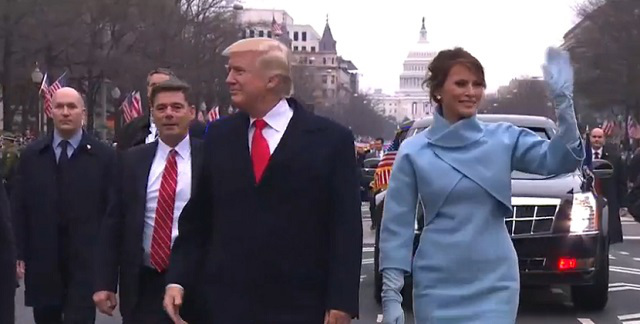 With a new presidency underway, Americans are getting acquainted with a new first family.
With a new presidency underway, Americans are getting acquainted with a new first family.
That includes first lady Melania Trump, the former model who was born and raised in the former Yugoslavia (now Slovenia).
Believe it or not, she isn’t America’s first foreign-born first lady. Another woman claimed that distinction 192 years earlier.
This is her story.
 One day in 1779, a dinner was held in the port city of Nantes, France where an American merchant lived with his family. Joshua Johnson hosted the American Colonies’ ambassador to France, John Adams, who brought along his 12 year-old son John Quincy. They were introduced to Johnson’s four year-old daughter, Lousia.
One day in 1779, a dinner was held in the port city of Nantes, France where an American merchant lived with his family. Joshua Johnson hosted the American Colonies’ ambassador to France, John Adams, who brought along his 12 year-old son John Quincy. They were introduced to Johnson’s four year-old daughter, Lousia.
And that might have been that, had the younger Adams and the girl not met again 16 years later. But first, let me explain how they got there.
Joshua Johnson came from Maryland. His business took him to London, where Louisa was born in February 1775. When war broke out between England and the Colonies two months later, hanging around the British capital wasn’t a good idea. So Johnson took his young family to France, which is how his toddler daughter came to meet the ambassador’s adolescent son.
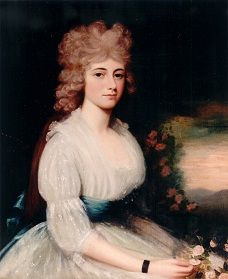 Louisa grew up to become a talented musician and writer with an agile mind that was always searching for answers. And she was pretty, too.
Louisa grew up to become a talented musician and writer with an agile mind that was always searching for answers. And she was pretty, too.
With independence won, it was safe for the wealthy Johnsons to return to London, where Joshua served as U. S. consul and lavishly entertained American expatriates.
Meanwhile, John Quincy enjoyed a scholarly life in Massachusetts. He was devoted to pleasing his parents – perhaps too much so. While studying law he fell in love and wanted to marry. But when his mother Abigail found out, she nixed it. Not good for his career, she said. Her son dutifully obeyed.
 When Washington appointed John Quincy ambassador to Holland (at age 26), he wanted to keep studying. But John and Abigail “persuaded” him to go and so, ever the dutiful son, he went.
When Washington appointed John Quincy ambassador to Holland (at age 26), he wanted to keep studying. But John and Abigail “persuaded” him to go and so, ever the dutiful son, he went.
By 1795, John Adams was vice president and the young ambassador was in London attending to some official business. John Quincy was invited to dine with the Johnsons. The 28 year-old Adams was initially attracted to an older daughter. But he caught the now 20 year-old Louisa’s fancy. In time, Adams’ interest shifted to her.
They courted and he popped the question in 1796. She replied with an enthusiastic “Yes!” Cupid had made another match.
Then Vice President and Mrs. Adams found out. They told their son, “Absolutely not!”
Why were they so opposed to him tying the knot with a woman they hadn’t even met? One simple reason: she hadn’t been born in America.
 True, she came from American stock. But her London birth made Louisa a British citizen. Abigail Adams was particularly snarky, calling Louisa a “half blood.” The elder Adams was elected president that year, and he was already thinking dynasty, with John Quincy running for president himself one day. How could he do that while explaining why he’d married an Englishwoman? No way, the family said.
True, she came from American stock. But her London birth made Louisa a British citizen. Abigail Adams was particularly snarky, calling Louisa a “half blood.” The elder Adams was elected president that year, and he was already thinking dynasty, with John Quincy running for president himself one day. How could he do that while explaining why he’d married an Englishwoman? No way, the family said.
For once, John Quincy stood up to his parents and followed his heart. He and Louisa wed in London on July 27, 1797.
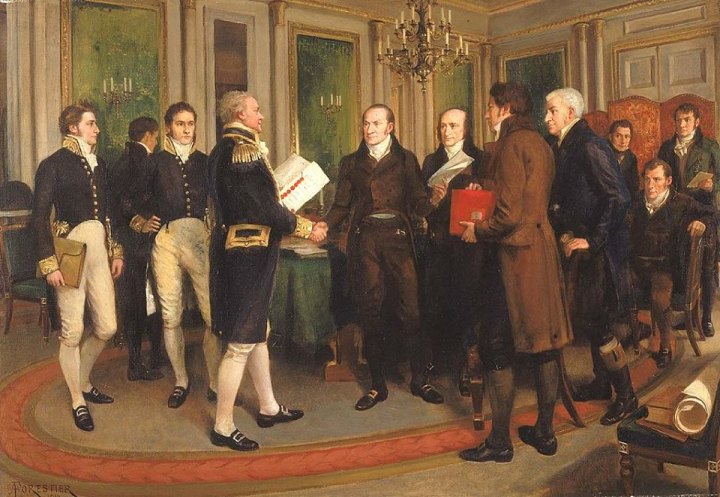 John Quincy continued his diplomatic career. His father appointed him ambassador to Prussia, where the couple lived until the dad was voted out of office and the son lost his job.
John Quincy continued his diplomatic career. His father appointed him ambassador to Prussia, where the couple lived until the dad was voted out of office and the son lost his job.
Moving to the United States in 1801, it was the first time Louisa ever set foot in the country.
Instead of being a liability to her husband’s political career, she turned out to be an asset. Washington society was drawn to her elegant tea parties, impressed by her European sophistication and, in a time when most people didn’t travel far from home, was fascinated to hear about the interesting places she’d lived.
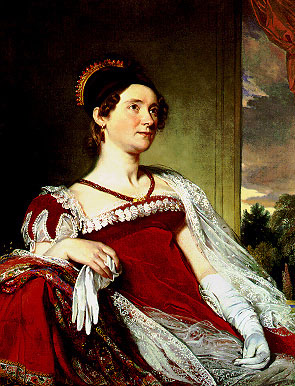 John and Abigail had got it wrong, and to their credit they eventually accepted their daughter-in-law. (Although Abigail -never shy about expressing her opinions on any subject whether they were requested or not- continually voiced her thoughts on how John Quincy and Louisa should raise their own children.)
John and Abigail had got it wrong, and to their credit they eventually accepted their daughter-in-law. (Although Abigail -never shy about expressing her opinions on any subject whether they were requested or not- continually voiced her thoughts on how John Quincy and Louisa should raise their own children.)
Louisa became First Lady herself in 1825. She disliked the formal duties accompanying life in the White House (she was one of the first residents to call it a “prison”) and did little entertaining. When Andrew Jackson defeated her husband four years later, she was happy to return to Massachusetts.
Louisa Adams’ story was filled with too many highs and lows to include here. (For interest, before the presidency Adams served as ambassador to Russia, where Czar Alexander I considered Louisa his favorite dancing partner; one year after the presidency eldest son George committed suicide by jumping off a boat.)
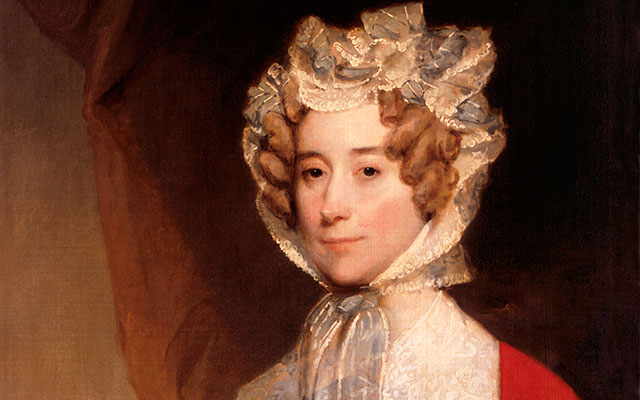 Yet amid the many swirls of her life, there was one constant: the love she and John Quincy shared. Fortunately, they didn’t let a president’s objections deprive them of their destiny together.
Yet amid the many swirls of her life, there was one constant: the love she and John Quincy shared. Fortunately, they didn’t let a president’s objections deprive them of their destiny together.
Did you find this enjoyable? Please continue to join me each week, and I invite you to read Tell it Like Tupper and share your review!
Curious about Tell It Like Tupper? Here’s a chance to see for yourself. Take a sneak peek at a couple chapters in this free downloadable excerpt.

